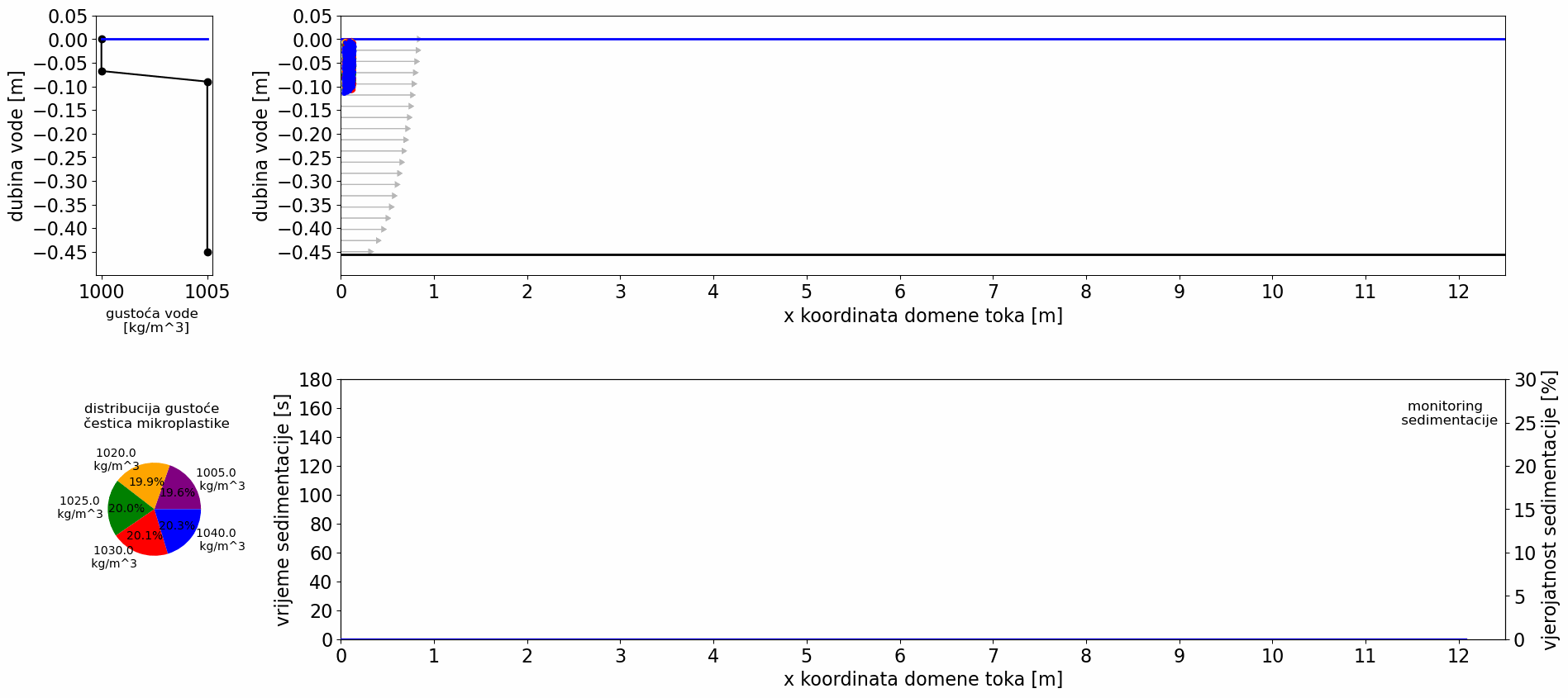Model of microplastic particle movement in inhomogeneous and laminar velocity fields
Hrvatske vode, (2021)
Abstract: From the sustainable development perspective, non-degradability and a constant microplastic particle increase in aquatic recipients require urgent development of protection measures against unfavourable environmental consequences. In order to do that, we firstly need an understanding of the microplastics genesis and the mechanics of its movement in the biosphere. This requires research activities documented in this paper. They are related to the presentation of a selected theoretical basis for modelling the movement of microplastic particles, and a relatively simple numerical algorithm developed for modelling the transport of microplastic particles in inhomogeneous field of fluid velocity in planar and laminar flow. The Lagrange’s description of the movement of microplastic particles is necessary because it is impossible to define the subject REV and the continuous concentration field. Analyses of practical importance require a relatively large number of microplastic particles, so it is necessary to develop a numeric algorithm through a compromise solution that attempts to minimise the computational time and maximise the impact of all dominant physical processes. Therefore, the proposed model is based on a system of two ordinary, nonlinear differential equations. In order to introduce the possibility of modelling particles of different shapes, the resistance factor of cdshape is modelled by a generalised four-parameter Clift and Gauvin model, where the parameters are defined by the spherical factor of a microplastic particle or the measure of a particle shape deviation from the sphere. The proposed modelling approach can be incorporated into some available software solutions (e.g. OPENFOAM). The end of the paper contains the presentation of a numerical example obtained by implementing the algorithm in the Python programming language and a review of the next experimental activities.


